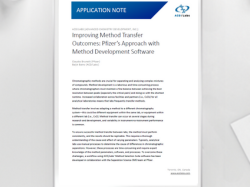Evaluating benefits of outsourcing biopharma R&D
Posted: 19 October 2022 | Caroline Peachey (European Pharmaceutical Review) | No comments yet
Near-term gains from outsourcing biopharma R&D activities can be offset by slower innovation in the long run, according to a recent paper.


A study published in Drug Discovery Today found that although outsourcing of biopharma R&D offers productivity benefits, near-term gains can be offset by slower innovation over the long term.
The paper by Billette de Villemeura et al, reviewed the advantages and disadvantages, from the viewpoint of pharmaceutical companies, of sourcing biopharma R&D externally over the use of internal capabilities. It also looked at empirical evidence for the relative efficiency of the two approaches.
Outsourcing was found to offer obvious productivity benefits, including access to new technology, variabilised costs and risk sharing, according to the paper.
However, it suggested that some types of outsourcing promise financial gain for the customers, but risk slower cumulative progress within the innovation ecosystem. “This is because the customers capture so much of the economic value of the outsourced R&D that they undermine the incentives of the suppliers to invest,” the authors said.
In concluding, Billette de Villemeura et al noted:
- There are at least two types of market: where the R&D service provide can appropriate value and where the customers capture the overwhelming share.
- Economic analysis predicts positive returns to those that provide R&D services when economies of scope across projects and technological spillovers are limited. Examples of this include certain clinical developments, which can benefit from competition between pharmaceutical firms.
- Biopharma R&D activities with large economies of scope and knowledge spillovers give up the profits they create to downstream customers while concentrating risk on their entrepreneurs and investors.
- Weak incentives for private sector involvement might deserve more policy attention, particularly when public goods fall between publicly funded academic research and the point in the commercial R&D process at which strong competitive pressure can be exerted on downstream customers.
“We suspect that future analyses of the pros and cons of R&D outsourcing, for both suppliers and customers, would provide clearer answers if they were to make [a] distinction [between the two types of market], rather than treating R&D outsourcing as a single homogenous entity,” the researchers said.









